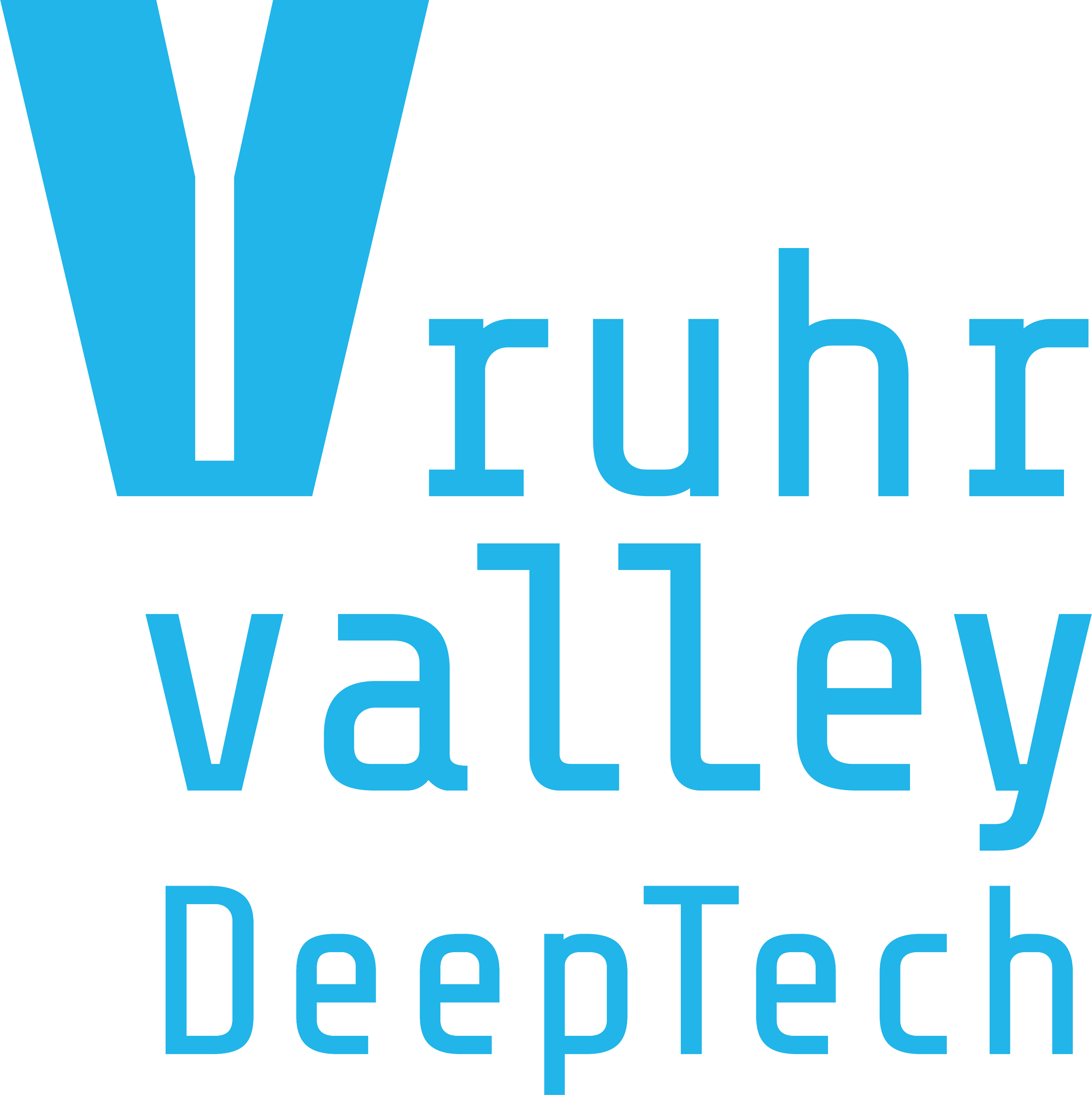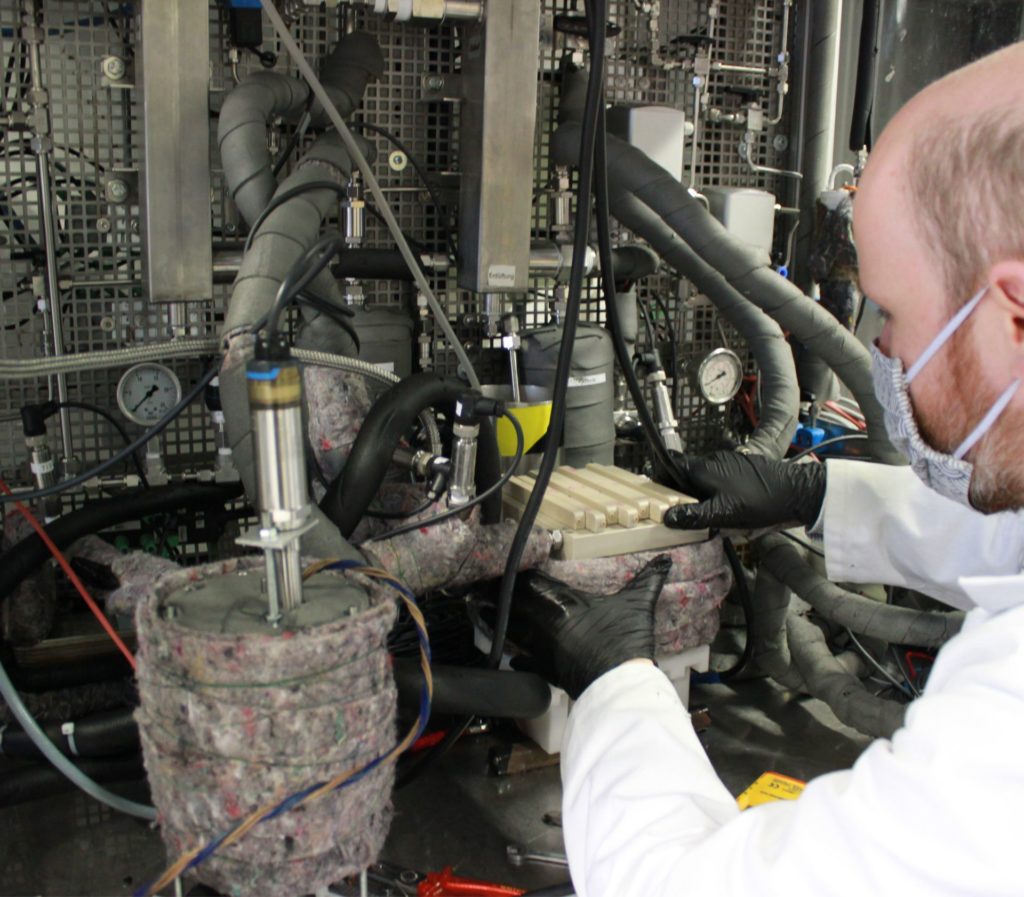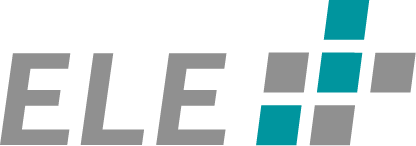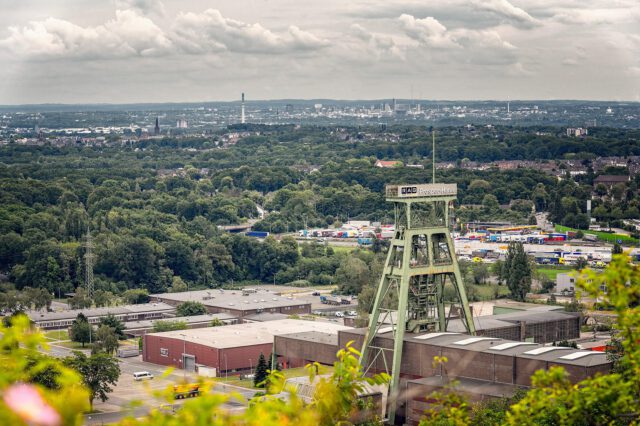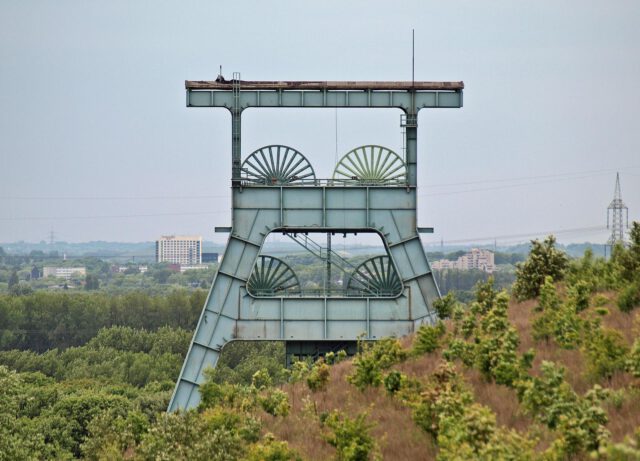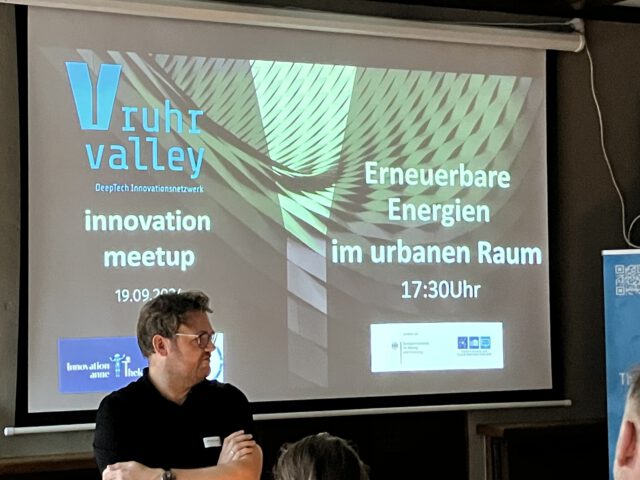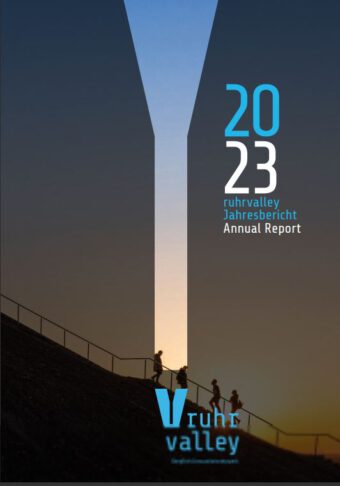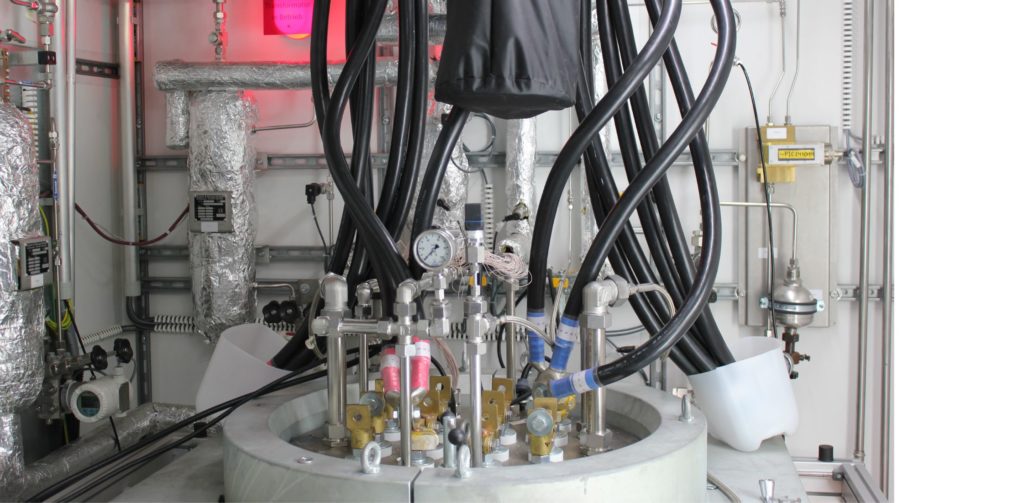
Project
AEMruhr
Alkaline Membrane Electrolysis Using Hydraulic Pressing
The objective is to build an alkaline membrane electrolyser with increased current density. Alkaline electrolysis has the potential to produce hydrogen inexpensively. In order to make it suitable for decentralised operation it needs to be combined with a membrane designed for a dynamic energy supply.
Starting Point
Energy production using renewable resources such as the wind and the sun is a dynamic process and thus requires storage systems that offer the same dynamic responsive characteristics. Polymer electrolyte membrane (PEM) electrolysis is expected to be an appropriate solution for the decentralised long-term storage of surplus energy from renewable sources; however, their construction requires the use of cost-intensive precious metal catalysts. To reduce costs, and at the same time increase energy storage using electrolysis, research is currently focusing on the use of anion exchange membrane water electrolysis (AEMWA), which requires neither precious metal catalysts nor titanium electrodes.
Our Solution
The partners in the ruhrvalley project AEMruhr work on developing and testing an AEMWE system based on hydraulic cell-pressing. Using this patented technology, it is possible to connect innovative cell components together to form an electrolysis stack with increased current density.
The project seeks to combine the advantages of the innovative stack concept with the advantages of alkaline electrolysis. Alkaline electrolysis has the potential to produce hydrogen inexpensively by foregoing the use of precious metals such as platinum and iridium. However, in order to make it suitable for decentralised operation it needs to be combined with a membrane designed for a dynamic energy supply. The objective is to build an alkaline membrane electrolyser with an output of 50kW and a hydrogen production pressure of at least 30bar. This working model will be designed for decentralised operation and can be controlled later through an IT platform. For this purpose, the decentralised AEMWE installations will be interconnected into a virtual load.
Funding ID
Westphalian University of Applied Sciences 13FH0I62IA
Dortmund University of Applied Sciences and Arts 13FH0I61IA
Supported by the Federal Ministry of Education and Research
Project Duration
2021 – 2024
